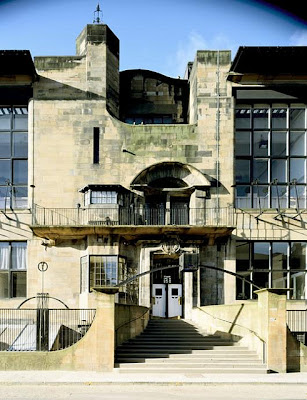Monday, July 28, 2008
Domino's Scientists Test Limits Of What Humans Will Eat
Domino's Scientists Test Limits Of What Humans Will Eat
At long last, a scientific explanation for Deep Pan Pizza, Cheesy Crust Pizza, etc; etc; Ad Nausea!
Labels:
Domino's Pizza,
Obesity,
Pizza,
The Onion,
theonion.com
Thursday, July 24, 2008
Liverpool, Paddy Hitler and Paddy Murphy

Liverpool Waterfront
The flyer from URBBEATZ about Liverpool’s history as a centre of the slave trend reminds us that this great merchant city and the 2008 European City of Culture has always been a cross roads for humanity. Liverpool does not just have one of England’s longest established black communities, but also a long established Chinese community, a huge Irish influx after the 1847 Famine (so much so it was nicknamed Dublin East!) and a smattering of many more cultures. Carl Jung, the Swiss psychiatrist and founder of the school of analytical psychology after having a dream vision referred to Liverpool as "the Pool of Life" (in fact, Jung never set foot in Liverpool). When the US beat poet and counter-cultural icon Allen Ginsberg arrived in Liverpool in May 1965, he declared the city to be "at the present moment, the centre of consciousness of the human universe". Perhaps his pronouncement shouldn't be taken too seriously: he made similar claims for Milwaukee and Baltimore. As Liverpool poet Brian Patten, whose floor Ginsberg slept on, says: "I think Allen believed the centre of human consciousness to be wherever he was at the time."
Back in 1931, the Daily Post writer Michael O'Mahoney magisterially wrote that Liverpool was the threshold to the ends of the earth. In those days it was a self-evident truth. Earlier still, as America opened up and was linked to Europe by Liverpool's steamship lines, millions of emigrants flowed through the city. Not all of the huddled masses, though, moved on. Thousands stayed in Liverpool, adding exotic ingredients to its melting pot. But of all the stories of Liverpool immigrants the two strangest are probably those of Paddy Hitler and Paddy Murphy for interestingly Liverpool had a strange Axis link with both Adolph Hitler’s nephew and a relation of the Japanese Emperor Hirohito living in the city.

Hitler's half brother Alois
Adolf Hitler did not have a son, but he did have a nephew, whose given name was Paddy. Paddy, the son of Hitler's half brother Alois, lived in Liverpool as a young boy. In 1933 he moved to Germany, trying to be a car salesman and cash in on his family name. Things didn't work out and he moved to the US, denouncing his Uncle and serving in the US Navy in the war. Finally he settled in Long Island where he had four sons, including Brian Hitler. Although to be strictly correct his full name was William Patrick Hitler, rather than Paddy and in any case, Hitler's nephew changed his surname to Stuart-Houston after WW2. So there was never really a Brian Hitler, only Brian Stuart-Houston.

William Patrick Hitler Poster
William Hitler grew up in Toxteth in the early 20th century living at 102, Upper Stanhope Street. William’s father Alois Hitler, the half-brother of Adolf had married an Irish girl called Bridget Dowling. Alois and Bridget had met at a horse fair in Ireland before eloping to London and marrying and finally settled in Liverpool. The Liverpool branch of the Hitler family ran different businesses including a boarding house and a restaurant. The couple had one child, William Patrick Hitler born on March 12th 1911.
Once his uncle rose to power in Germany, William moved to Germany and basked in the female adulation that came from having such a famous uncle. Hitler never had much time for William and eventually paid him off (there was rumour of blackmail about revealing Jewish ancestors) and he moved to the United States to go on a lecture tour organised by William Randolph Hearst. When war broke out he stayed in the USA joining the US Navy in 1944. A recurring story, that has never been proved either way, is that Adolf Hitler visited Liverpool in 1912. At the time he was practically destitute and working as a part time labourer in Vienna.
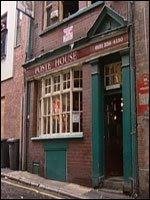
Poste House pub where Hitler is meant to have had a drink
Local legend has it that Hitler drank in the Poste House pub in Cumberland Street. The evidence for Hitler’s visit comes from the writings of William’s mother Bridget who moved to the USA too. She wrote that her famous brother-in-law had moved to Liverpool and lived with her and Alois from November 1912 to April 1913. There is no other evidence for the visit, which many historians dismiss as a ploy by Bridget to make money from the infamous family name.
The family home on Upper Stanhope Street where Adolf Hitler is reputed to have stayed was destroyed by the Luftwaffe in 1942, ironically the last street in Liverpool to be bombed in the Second World War. After the war William Patrick Hitler changed his surname and lived in relative obscurity up to his death in 1987. He was buried alongside his mother in Long Island cemetery. He had four sons Howard, Alexander Adolf, Louis and Brian. Howard died in a car crash in 1989; the three surviving sons have no children.
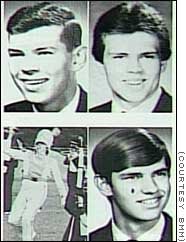
Hitler's Grand Nephews
Beryl Bainbridge wrote a novel about a fictional visit by a young Adolf to his Liverpudlian relative - which was dramatised on T.V. in the early 80s I. Willie's three sons, who all lived in Long Island, changed their name and made a pact never to have children. A new documentary, called "The Last of the Hitler’s," tells the story of the brothers, and their bizarre pact with each other never to have children in order to sever the bloodline of their infamous relative. The film is based on the fascinating book of the same name by journalist David Gardner.
http://en.wikipedia.org/wiki/William_Patrick_Hitler
A relation of Emperor Hirohito escaped the stifling restrictions of life at the Imperial Court in the 20s and worked his passage to Liverpool where he worked on the docks and lived in a council tenement under the name of Paddy Murphy!
Paddy Murphy was the assumed name of Kanso Yoshida, born in Japan in 1895, settled in Liverpool in 1938 and lived there until he died in 1973, his death meriting a lengthy obituary in the Liverpool Echo. Kanso was second cousin to Princess Chichibu, who was sister-in-law to Emperor Hirohito, the father of Akihito, the current Emperor of Japan.

The peace loving Imperial Deity aka The Emperor Hirohito
Kanso Yoshida’s grandson Frank King still lives in Liverpool where he describes himself as a pedigree mongrel. Although his features belie the fact that his grandfather was the famous Japanese Liverpool resident, known to all as Paddy Murphy, there is plenty of Irish in his family. His Grandfather left Japan to escape the stifling life of the Imperial Court and worked as a seafarer and visited Liverpool several times before deciding to make his home there. Although Frank knew Kanso all his life, only recently (2007) did he discover that Kanso was his grandfather.
"My mother told me, just before she died seven years ago. Apparently my grandmother, Mabel Dingle, had been a barmaid at The Yacht in Duke Street, Kanso's local pub (he lived in Kent Gardens then). They had a bit of a fling, which resulted in my mother. My grandmother later married George Puddifer.
"I always knew he was my step-grandfather but never knew about Kanso being my real granddad till I was in my mid-40s." When he was a child, Frank used to play dominoes with Kanso, and realised the old man had a bit of a soft spot for him. Kanso Yoshida worked as a ship's fireman and donkeyman, and was in the British Navy in both world wars. In 1917, during World War I, his ship Huntstrick was torpedoed and sunk off Gibraltar, injuring Kanso badly. Yet in World War II his ship was twice bombed, but Kanso escaped unhurt.
In 1940 Kanso became a British citizen, but unlike many, was not interned. After Japan entered the war in 1941, he was subject to snide remarks. Kanso explained his nickname: "One day I get real mad. And I yell out, 'I'm not Japanese, I'm good Englishman as any of you. If you don't like my name, then OK, I change it. Call me Paddy Murphy!' I am known as Paddy Murphy ever since."
So there you have the strange tale of Liverpool and Paddy Hitler and Paddy Murphy, relations of the leaders of Germany and Japan respectively during World War 2 which in the masterly understatement of the Emperor Hirohito when he ordered Japan’s surrender “has not necessarily worked out to Japan’s advantage!” Unfortunately Adolph Hitler’s verdict on World War 2 was not recorded but no doubt it would have been similar!
Labels:
2008 European City of Culture,
Adolph Hitler,
Akihito,
Allen Ginsberg,
Alois Hitler,
Carl Jung,
Emperor Hirohito,
Kanso Yoshida,
Liverpool,
Paddy Hitler,
Paddy Murphy,
William Hitler
Wednesday, July 23, 2008
Liverpool and the Slave Trade
Free summer course by my friends in URBEATZ...see attached flyer...Open to all.
If you are interested email yaw.urbeatz@gmail.com
If you are not interested, please pass on to anyone who may be.....
http://www.myspace.com/urbeatz
Labels:
European City of Culture,
Liverpool,
Slave Trade,
URBEATZ
Tuesday, July 22, 2008
Charles Rennie Mackintosh

Charles Rennie Mackintosh
Charles Rennie Mackintosh, architect, designer and artist is celebrated around the world as one of the most creative figures of the early 20th century. He was born one of eleven children in the Townhead area of Glasgow, close to Glasgow’s St. Mungo’s Cathedral. From these beginnings, he has become one of the most celebrated architects of his generation.
Mackintosh took his inspiration from Scottish traditions and blended them with the flourish of Art Nouveau and the simplicity of Japanese forms. Much of his work has survived. It can be seen today alongside that of his close collaborators in the group known as "The Four" and the other artists and designers who collectively created "The Glasgow Style". He was apprenticed as an architect and he became a draughtsman with Honeyman and Keppie, a new architectural practice, eventually becoming a partner in 1903. All along he attended evening classes in art at the Glasgow School of Art. It was at these classes that he first met Margaret MacDonald (whom he later married), her sister Frances MacDonald, and Herbert MacNair who was also a fellow apprentice with Mackintosh at Honeyman and Keppie. This group of artists, known as "The Four," exhibited in Glasgow, London and Vienna, and these exhibitions helped establish Mackintosh's reputation. The so-called "Glasgow" style was exhibited in Europe and influenced the Viennese Art Nouveau movement known as Sezessionstil (in English, The Secession) around 1900.

Mackintosh was greatly influenced by Japanese design and art (although he never visited the country) and the Glasgow he lived in was a very different city in 1900 from the one we see today, largely due to its importance as the world’s greatest shipbuilding centre. Located by the margins of the River Clyde, during the Industrial Revolution the city was one of the greatest production centres of heavy engineering and shipbuilding in the world. As the city grew and prospered, a faster response to the high demand for consumer goods and arts was necessary.

Mackintosh Chairs
Industrialised, mass-produced items started to gain popularity. Along with the Industrial Revolution, Asian style and emerging modernist ideas also influenced Mackintosh's designs. When the Japanese isolationist regime softened, shipyards building at the River Clyde were exposed to Japanese navy and training engineers; Glasgow’s link with the eastern country became particularly close. Japanese design became more accessible and gained great popularity. This style was admired by Mackintosh because of: its restraint and economy of means rather than ostentatious accumulation; its simple forms and natural materials rather than elaboration and artifice; the use of texture and light and shadow rather than pattern and ornament.

In the old western style furniture was seen as ornament that displayed the wealth of its owner and the value of the piece was established according to the length of time spent creating it. In the Japanese arts furniture and design focused on the quality of the space, which was meant to evoke a calming and organic feeling to the interior. Shipbuilding also had another consequence for Glasgow as there was a large workforce engaged in the “fitting out” trades, joinery, cabinet making, textiles, enamelling, glass work, pottery and metalworking providing both an outlet for artists and artisans to make the designs a reality.
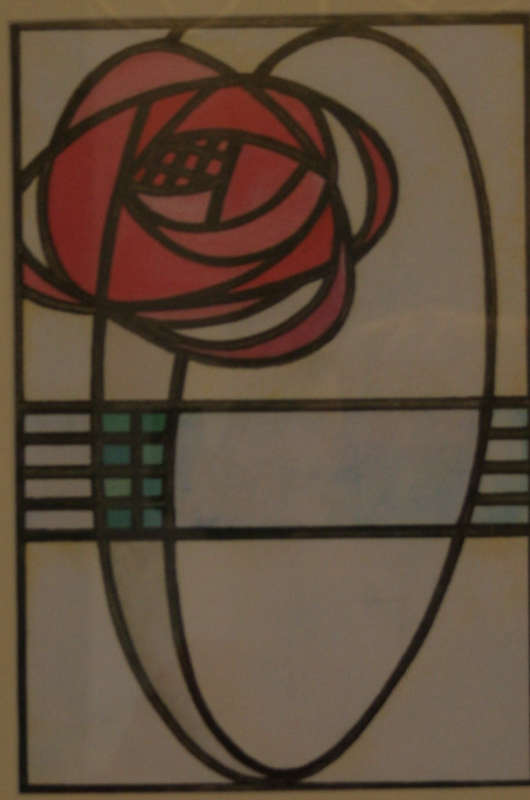
Glasgow is forever associated with Mackintosh, it is where he studied architecture influenced by Glasgow’s own great neo-classicist Alexander “Greek” Thomson and indeed he won the Alexander Thomson scholarship which allowed him to tour Italy in 1891. He took his inspiration from the many like minded designers who tried to marry machine methods with nature in the “Glasgow School” but he was never a sterile modernist and his designs are full of naturalistic references and humanity. In and around Glasgow you find the corpus of his work, The Hill House at Helensborough, the Mackintosh House at 6 Florentine Terrace, Glasgow where he and his wife Margaret Macdonald lived from 1906 to 1914, the Willow Tea Rooms, Ruchill Church Hall, Queen’s Cross Church, Martyr’s Public School, The Lighthouse, The Daily Record Building, Scotland Street Public School.

House for an Art Lover, Interior
The House for an Art Lover was completed in 1996 inspired by Mackintosh's portfolio of drawings of 1901 which were submitted as a competition entry to a German design magazine and finally the impressive collection of artworks and artefacts in the Kelvingrove and Hunterian museum’s. I was excited at seeing Mackintosh’s work “in the flesh” after all these years and whilst I saw most of his work from the outside time dictated that I was to visit the School of Art, The Willow Tea Rooms and the collection at the Kelvingrove Museum.
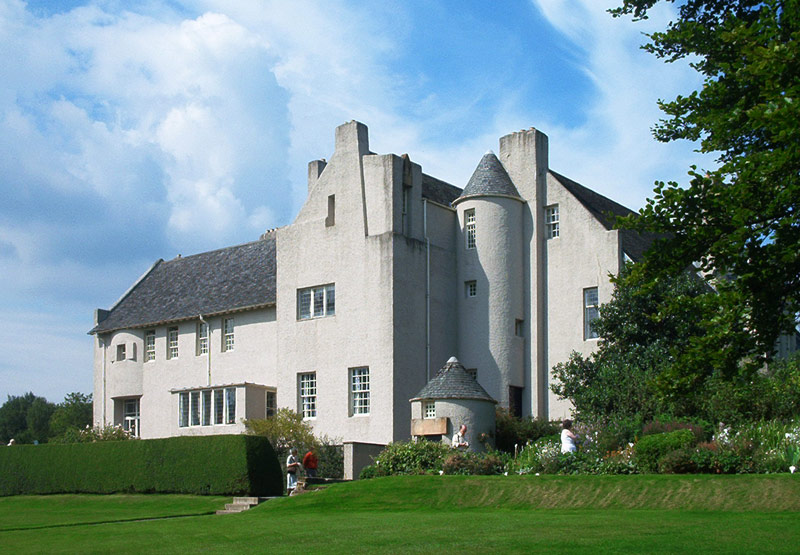
Hill House Helensborough
The Art School was founded in 1845 as the Glasgow Government School of Design, one of the first Government Schools of Design. In 1853 it changed its name to The Glasgow School of Art. Initially it was located at 12 Ingram Street, but in 1869 it moved to the McLellan Galleries. In 1897 work started on a new building to house the school on Renfrew Street. The Glasgow School of Art is regarded as one of the foremost institutions for the study of art and design in the world.
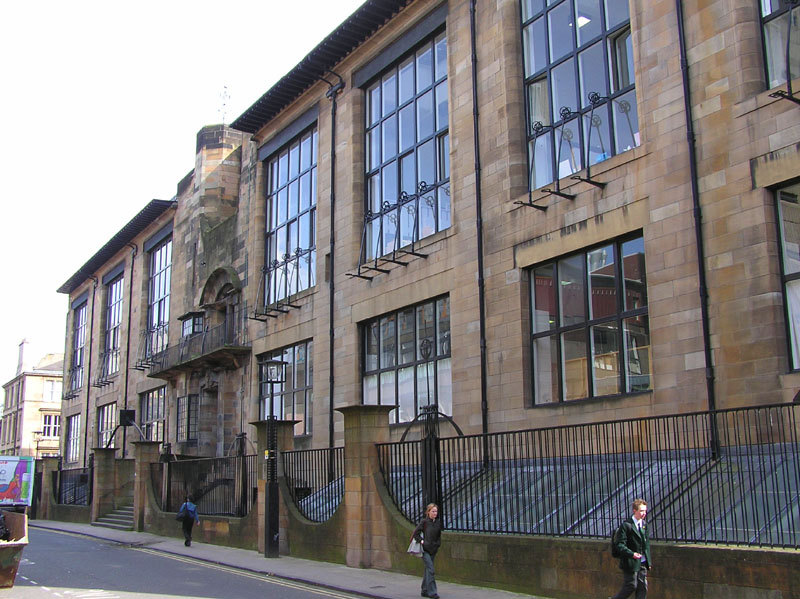
Glasgow School of Art

Library 1909
In 1896 an architectural competition took place for the building of a new Glasgow School of Art on a site offered to the School's directors. Working to a budget of just £14,000, the Glasgow firm of Honeyman and Keppie submitted a design from the hand of one of their junior draughtsmen, Charles Rennie Mackintosh. Sympathetic to Mackintosh's intentions and knowing him as a student, the design was praised by the Head of the School, Francis Newbery and after being independently assessed by the educational authorities in London, was finally accepted.

Typeface based on Mackintosh's handwriting and lettering
This was to be his masterwork. Significantly, the building was constructed in two distinct phases, 1897-99 and 1907-09, due to a lack of money. Stylistically, the substantial delay in completion offered Mackintosh the opportunity to amend and fully integrate his original design (of 1896) which owed much to Scotland’s earlier baronial tradition with a second half to the building that looked very much to the 20th century through its use of materials and technology. Most dramatic of all the interiors was the new Library (completed in 1909), which was a complex space of timber posts and beams. Its construction owed much to traditional Japanese domestic interiors but ultimately the building was an eclectic mix of styles and influences.
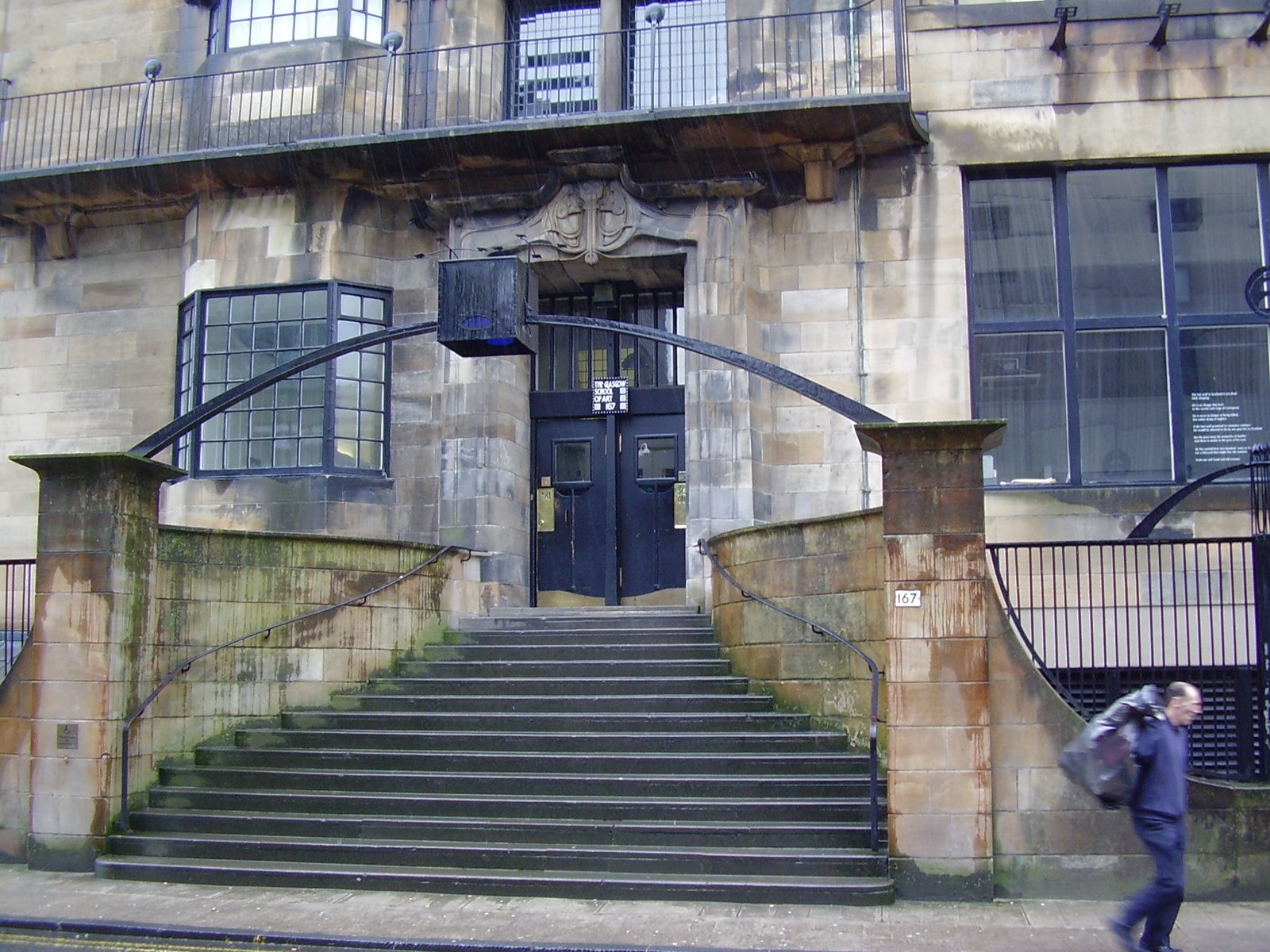
Glasgow School of Art - Entrance
In the book Mackintosh's Masterwork, Dr James Macaulay states, "It is without doubt one of the great works of arts and crafts architecture of the turn of the century. Mackintosh's response to a difficult site and a demanding brief is a creative synthesis of opposite - austere and delicate, dark and bright, derivative yet innovative. Whilst the exterior impression is one of imposing grandeur, the building's sombre facades and towering outer wall owe much to the Scottish baronial tradition and the interior reveals itself to be a lively and complex set of spaces. Although quoting art nouveau in some of the detailing, the overall effect is of looking forward rather than back".
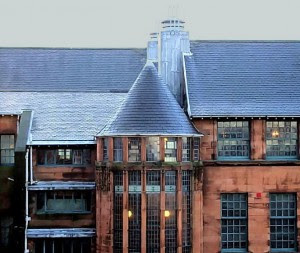
Today photos of the interior are restricted for it is still a working school of art but contains many valuable original Mackintosh works. The detailing of the exterior is interesting and as well as the unusual form the eye is drawn to the exterior metalwork. The high bright windows for the north lit studios are kept light inside by the use of wrought-iron brackets outside to support the frames. These are stylised plants and as your gaze moves from left to right along the façade you notice that they progressively open and then as you look towards the other end of the building progressively close. The same naturalistic homage is paid with the railings whose finials are like tulips closed at one end then blooming and closing again. The massive fenestration of the north façade is visually broken up by decorative wrought-iron brackets that brace the huge windows and can be used as window cleaning supports. The lively wrought-iron railings also give decoration to an otherwise reduced building with finials of stylised birds, bees and beetles that resemble Japanese Mon or family crests.

Willow Tea Room Menu Cover
The School forms a simple E-shaped building with an austere and asymmetrical north façade with massive studio windows. A single central entrance leads to a staircase with two floors of studios to the right and left. The bright and airy Director’s Office with fitted cupboards and a fireplace is directly above the entrance. At the centre of the school, at the top of the stairwell top-lit with a glazed roof and timber trusses like a medieval barn, is an exhibition space called the Museum. You enter through the low main entrance with a “guardian” sculpture and into a Scottish baronial style hall but your path is lit upwards by the light cascading into the relatively dark space from the stairwell. Following the stairwell up Mackintosh plays an architectural “coup de theatre” as you emerge into a triple height roof lit gallery of the Museum with its huge honest timber trusses. Looking at these trusses you notice there is a roundel in the centre with what looks like a seedling and as your eye moves along the trusses this appears to grow and geminate for each of these trusses is slightly different creating movement and visual interest. There was little additional decoration to the building because of the limited budget.Unusually for the period there was only a small stone carving over the entrance and any decoration that Mackintosh managed to incorporate was functional as well as beautiful.
In the second phase of construction, the west elevation was radically altered with the addition of the library’s dramatic three-storey windows. The interior of the library is no less surprising, with the central fall of light from the windows contrasting with the dark stained wooden gallery supported by split beams. Mackintosh designed the fittings and furnishings in dark stained wood decorated with splashes of red, green and white – a magical mix of academic sobriety and modern geometric intensity. This library was probably one of Mackintosh’s most exciting interiors in a building that both kick started his architectural career and later revealed his mature style.
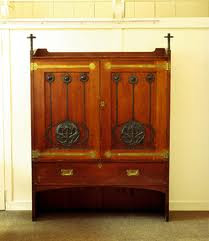
Linen Cupboard in The Liverpool Museum
What impresses though is both the humanity of the building and the clever use of the limited budget. Humanity in the window sitting areas on the top floor gallery, which provide natural niches for students to congregate in. The humanity in the fanlights to the studios featuring the Red Rose design which became the symbol of the “Glasgow School” but on either side were niches which Mackintosh had designed to hold a vase with a single stem rose so the students would be inspired by the real thing. The clever use of the budget is seen in the use of “Glasgow Marble” or polished concrete to you and me! And in the library the design with plain timber gives a real sense of enclosure and compartmentalisation in a relatively small space. It is still a stimulating building and still a building which earns its keep as a working College of Art.

Willow Tea Room 1903
Early in his career, in 1896, Mackintosh met Catherine Cranston (widely known as Kate Cranston or simply Miss Cranston), an entrepreneurial local business woman who was the daughter of a Glasgow tea merchant and a strong believer in temperance. The temperance movement was becoming increasingly popular in Glasgow at the turn of the century and Miss Cranston had conceived the idea of a series of "art tearooms", venues where people could meet to relax and enjoy non-alcoholic refreshments in a variety of different "rooms" within the same building. This proved to be the start of a long working relationship between Miss Cranston and Mackintosh. Between 1896 and 1917 he designed and re-styled interiors in all four of her Glasgow tearooms, often in collaboration with his wife Margaret MacDonald.

Willow tea rooms - Exterior

Willow tea rooms - Interior
The Willow tea rooms occupied a narrow site on Sauchiehall Street – old Scots for ‘alley of willows’, hence the use of willow for many of the decorative motifs used. Nothing escaped Mackintosh’s attention. He and Margaret designed everything from furniture and menus, to the waitresses’ uniforms. Within the four storey building, Mackintosh created a ladies’ tea room on the ground floor, with a general lunch room at the back and a tea gallery above it. On the first floor was a more exclusive ladies’ room with a men’s billiard and smoking room on the floor above. The most extravagant of the rooms was the Room de Luxe on the first floor.
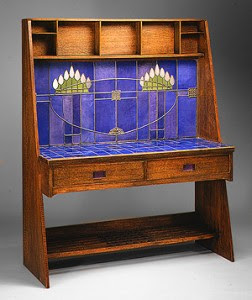
Washstand made for Miss Kate Cranston
Overlooking the street, it had white walls with a frieze of coloured glass, mirrored glass and decorative leading, a gesso panel by Margaret Macdonald, splendid double doors with further leaded glass decoration and silver painted high-backed chairs and sofas upholstered in rich purple. Now restored the ground floor is a jewellery shop but the gallery is an excellent tea room where the beverages, dainties and savouries are still served in the proper manner!
Willow tea rooms - Salon Deluxe
The Kelvingrove Art Gallery and Museum is an impressive world class museum containing, amongst many other exhibits, Salvador Dali’s “Christ of St. John of the Cross.” The Charles Rennie Mackintosh and Glasgow Style gallery is divided into six stories. It is the largest display in the city of the Glasgow Style’s wide range of media and techniques: stained glass, works on paper, textiles and embroidery, jewellery, repoussé metalwork, silver, enamelwork, glass, gesso, furniture and interiors. It is the most comprehensive collection of the “Glasgow School” and essential viewing to understand the richness and diversity of what was being produced by Mackintosh and his peers and to put his work in context.


Kelvingrove Art Gallery and Museum
Despite success in Europe and the support of clients such as Blackie and Cranston, Mackintosh’s work met with considerable indifference at home and his career soon declined. Few private clients were sufficiently sympathetic to want his ‘total design’ of house and interior. He entered the competition to design a cathedral for the City of Liverpool (1902) but although his design showed a Gothic quality as requested, his entry was rejected and his design for Scotland Street School (1906) in Glasgow was to be his last public commission.

Detail; Queens Cross Church, Glasgow
By 1914 Mackintosh had despaired of ever receiving the level of recognition in Glasgow that he felt he deserved. He became increasingly obstinate and incapable of compromise and it is known that this exerted unnecessary pressures on his colleagues. In an attempt to resurrect his career, Mackintosh resigned from the practice and with his wife Margaret Macdonald moved to London. This was unfortunate timing, for with the onset of the First World War all building work was severely restricted. Adventurous plans for a suite of artists’ studios and a theatre were never built. It is possible that he intended to move to Vienna, where he was highly respected having forged friendships with Austrian architects such as Josef Hoffmann and Koloman Moser, only for his plans to be thwarted by the outbreak of World War 1. Mackintosh moved to Walberswick in Suffolk in 1914, where he produced a series of botanical watercolours. While there he was arrested as a spy, possibly because he received post from central Europe, and he then moved to London.
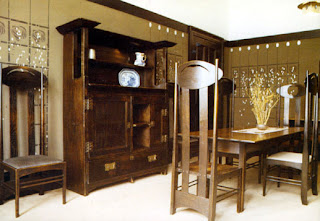
The Mackintosh's dining room at their house at 78 South Park reconstructed at the Hunterian Museum, Glasgow
Mackintosh’s career was a relatively short one, but of significant quality and impact. All his major commissions were between 1896 and 1906, where he designed private homes, commercial buildings, interior renovations, church, and furniture. In 1923 he moved to southern France where he spent the last five years of his life concentrating on painting before dying in London. Despite the disappointments of his later years, his early and mid-career work in Glasgow – much of which is still in use today – has sealed his reputation as one of the most important architects and designers of the turn of the 20th century. We can only speculate on what he would have achieved if he had worked as an architect for longer or indeed if he had actually visited Japan. He died on December 10, 1928 of throat cancer.

"There is hope in honest error, none in the icy perfection of the mere stylist ............."
Combining a progressive modernity with the spirit of romanticism, Charles Rennie Mackintosh (1868-1928) created many of the best loved and most influential buildings, furniture and decorative schemes of the early 20th century and in his home town of Glasgow his work is still cherished and preserved and still continues to inspire.

Rose and Tear Drop fabric 1923
For more on Architecture and Design see ArchiBlogs in the Blog sidebar.
Labels:
architect,
Artists,
Charles Rennie Mackintosh,
designer,
Glasgow,
Glasgow School,
Glasgow School of Art,
Kelvingrove Museum,
Sauchiehall Street,
Scotland Street School,
Sezessionstil,
The Hill House
Monday, July 21, 2008
Examine the Examiner.
The London Evening Standard reports that the man at the centre of the SATS marking fiasco has the use of a £1 million Chelsea flat as part of his pay and perks package, in a report today. Ken Boston, 65, came under increasing pressure to justify his £328,000-ayear deal as it emerged that half a million children could be forced to re-sit key tests.
Dr Boston is paid more than the Governor of the Bank of England in his salary package, which jumped 15 per cent from last year, and perks which include the flat and six business-class flights a year back to his home country of Australia. The flights, which typically cost between £3,700 and £7,700, can be claimed by either Dr Boston, his wife Yvonne or daughter Nathalie.

Not a whinging Pom!
He is chief executive of the Qualifications and Curriculum Authority which has come in for a hail of criticism over the late delivery of the results of tests taken by 11- and 14-year-olds across England, as well as alleged poor marking standards. The company's five-year contract is worth £165 million. As the marking crisis deepened, with at least 175,000 children still waiting for results, Dr Boston faced growing pressure over his decision to hire US-based firm ETS Europe to run the tests this year.
Government sources have questioned whether he can survive the furore. He has been ordered to send a copy of his contract of employment to MPs on the Commons schools select committee which is investigating the crisis. Half a million children could be forced to take English and maths tests again next term. Secondary school teachers are expected to make new arrivals take a series of fresh tests because they have no confidence in the accuracy of the SATS.
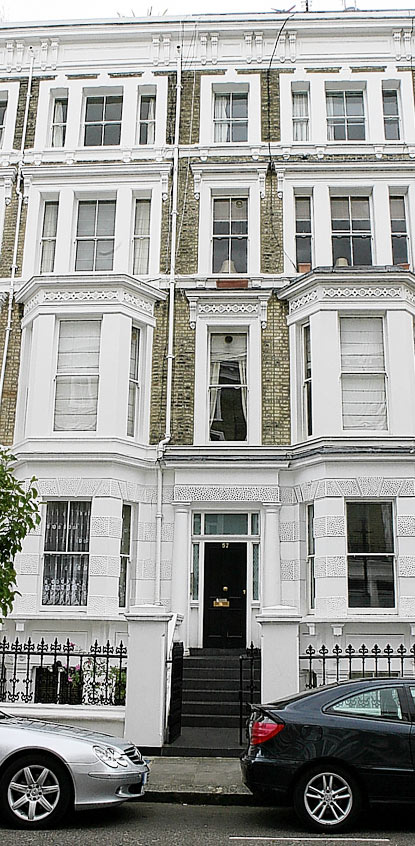
Not a patch on my Aussie Pad!
Now it would be wrong of anybody to begrudge Ken Boston his wonderful remuneration package and perhaps we'll soon find out whether it is with him personally or with an offshore company and whether Dr. Boston is one of that curious non taxpaying race from a different planet, the Non-Doms? There is obviously no need for concern by Gordon Brown here, or even the Deputy Chancellor Alistair Darling, for obviously, unlike greedy teaching assistants and cleaners lording it up on their 2.5% wage increase, Dr. Boston's salary does not contribute to inflation? And I’ve no doubt that the Chief Examiner’s tax affairs will stand scrutiny and he contributes fully on his generous salary and extensive tax payer funded Benefits in Kind to Her Majesty’s Revenue as would any other PAYE employee, such as his cleaning lady. I cannot imagine it would be otherwise as I know HMRC are scrupulous in enforcing the IR35 provisions to ensure individual’s don’t use contrivances to avoid paying their fair share of tax and National Insurance.
No, the only nagging doubt I have is this, was it not possible to find ONE other person with Ken Boston's wonderfully proven talents within the European Economic Area as required under the quaint and arcane procedures of British Immigration law? I'm embarrassed to be expressing these doubts for of course these laws were never expected to apply to good chaps with the right skin colour from the Dominions? I’m sure all that immigration stuff is in order and we will be spared the appalling vista of a government which was employing illegal aliens as security guards in the Home Office having to prosecute itself for breaching its own draconian immigration laws. Let’s face it, applying the law equally is only meant to be for the “little people” not for “one of their own.” No, put these thoughts out of your mind I’m sure all is above board!
As for Doctor Ken, Gd on ya Mate in getting yourself one Bonzer Deal! Keep stuffing it Mate to those Whinging Poms!!
Dr Boston is paid more than the Governor of the Bank of England in his salary package, which jumped 15 per cent from last year, and perks which include the flat and six business-class flights a year back to his home country of Australia. The flights, which typically cost between £3,700 and £7,700, can be claimed by either Dr Boston, his wife Yvonne or daughter Nathalie.

Not a whinging Pom!
He is chief executive of the Qualifications and Curriculum Authority which has come in for a hail of criticism over the late delivery of the results of tests taken by 11- and 14-year-olds across England, as well as alleged poor marking standards. The company's five-year contract is worth £165 million. As the marking crisis deepened, with at least 175,000 children still waiting for results, Dr Boston faced growing pressure over his decision to hire US-based firm ETS Europe to run the tests this year.
Government sources have questioned whether he can survive the furore. He has been ordered to send a copy of his contract of employment to MPs on the Commons schools select committee which is investigating the crisis. Half a million children could be forced to take English and maths tests again next term. Secondary school teachers are expected to make new arrivals take a series of fresh tests because they have no confidence in the accuracy of the SATS.

Not a patch on my Aussie Pad!
Now it would be wrong of anybody to begrudge Ken Boston his wonderful remuneration package and perhaps we'll soon find out whether it is with him personally or with an offshore company and whether Dr. Boston is one of that curious non taxpaying race from a different planet, the Non-Doms? There is obviously no need for concern by Gordon Brown here, or even the Deputy Chancellor Alistair Darling, for obviously, unlike greedy teaching assistants and cleaners lording it up on their 2.5% wage increase, Dr. Boston's salary does not contribute to inflation? And I’ve no doubt that the Chief Examiner’s tax affairs will stand scrutiny and he contributes fully on his generous salary and extensive tax payer funded Benefits in Kind to Her Majesty’s Revenue as would any other PAYE employee, such as his cleaning lady. I cannot imagine it would be otherwise as I know HMRC are scrupulous in enforcing the IR35 provisions to ensure individual’s don’t use contrivances to avoid paying their fair share of tax and National Insurance.
No, the only nagging doubt I have is this, was it not possible to find ONE other person with Ken Boston's wonderfully proven talents within the European Economic Area as required under the quaint and arcane procedures of British Immigration law? I'm embarrassed to be expressing these doubts for of course these laws were never expected to apply to good chaps with the right skin colour from the Dominions? I’m sure all that immigration stuff is in order and we will be spared the appalling vista of a government which was employing illegal aliens as security guards in the Home Office having to prosecute itself for breaching its own draconian immigration laws. Let’s face it, applying the law equally is only meant to be for the “little people” not for “one of their own.” No, put these thoughts out of your mind I’m sure all is above board!
As for Doctor Ken, Gd on ya Mate in getting yourself one Bonzer Deal! Keep stuffing it Mate to those Whinging Poms!!
Sunday, July 20, 2008
Jacobite Express
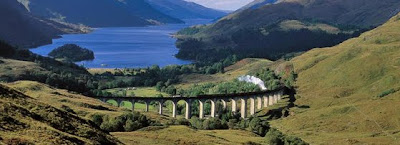
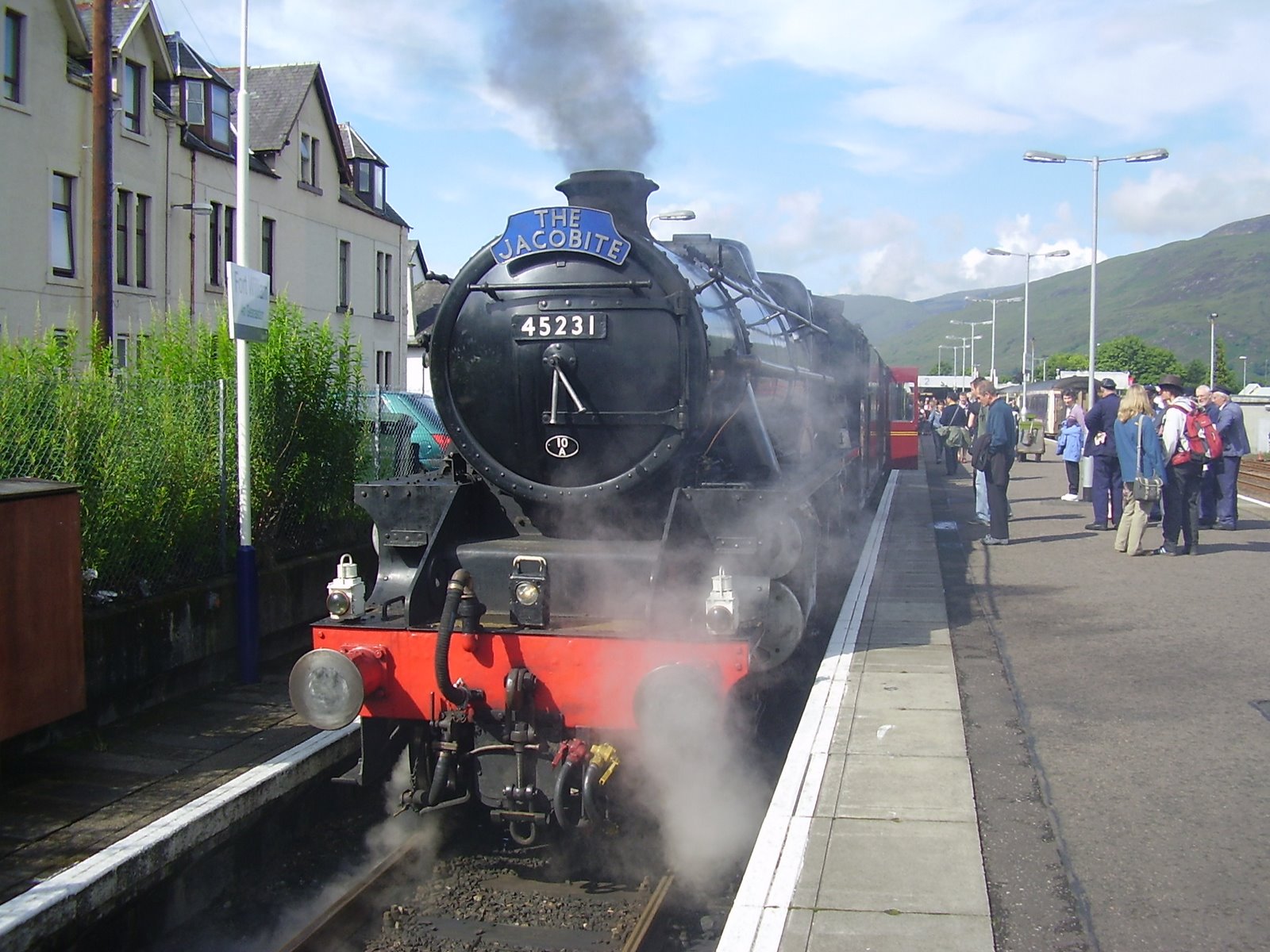
The West Highland Line (Scottish Gaelic: Rathad Iarainn nan Eilean - "Iron Road to the Isles") is one of the most scenic railway lines in Britain, linking the fishing port of Mallaig on the west coast to Glasgow City. Passenger services on the line are operated by First ScotRail, primarily between Glasgow and Mallaig with the daily Caledonian Sleeper overnight service between Fort William and London Euston. Our sleeper train from London terminated at Fort William, but the true glory of the West Highland Line was yet to come. The section between Fort William and Mallaig passes over a magnificent viaduct at Glenfinnan, through Arisaig with its fine views of the Small Isles of Rùm, Eigg, Muck and Canna, and the sparkling white sands of Morar before coming to Mallaig itself.

It is regarded as one of the Great Railway Journeys of the World and was voted Top Railway Journey in the World 2009 and 2010 by Wanderlust Magazine, due mainly to the stunning scenery through which the steam hauled Jacobite Express travels. The 84 mile round trip takes you past Britain's highest mountain, deepest loch, shortest river and most westerly station.

Black 5 Loco “The Sherwood Forester”

On this Friday morning as we pulled into Fort William on the overnight Caledonian Sleeper from London we did so with an increasing sense of anticipation for on the platform opposite was our next transport, the hissing, steaming “Jacobite Express” the steam locomotive-hauled train which operates over this section in summer and which in less than a half an hour's time would take us on our next adventure the 42 miles to Mallaig. This it would do slowly for just over two hours with time to appreciate the scenery of sea, mountain and isle on this twisting single line track to Mallaig, the port for the Isle of Skye.
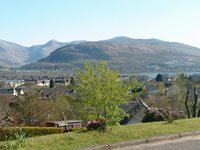
Fort William
Described as one of the great railway journeys of the world this 84 mile round trip takes you past a list of impressive extremes. It starts near the highest mountain in Britain (Ben Nevis), visits Britain's most westerly mainland railway station (Arisaig), then passes close by the deepest freshwater loch in Britain (Loch Morar), and the shortest river in Britain (River Morar) and finally arrives next to the deepest seawater loch in Europe - Loch Nevis. The train leaves Fort William at 10:20am and returns to Fort William at 4:00pm with an hour and a half in Mallaig. It is a great way to spend the day! On this Friday morning the locomotive was a Black 5 “The Sherwood Forester” which pulled a rake of atmospheric Mark 2 British Rail stock which has a brake van, a First Class coach, Diner Coach and Standard Class coaches which also included an onboard souvenir shop. In First Class tea and scones are served and there is a friendly ambience on board. Make sure you make a reservation (01524 737751) as this train has lots of coach party bookings with American, Japanese and Continental tourists.
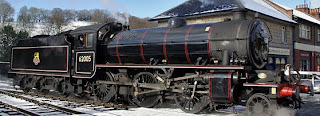
"Black 5" Loco
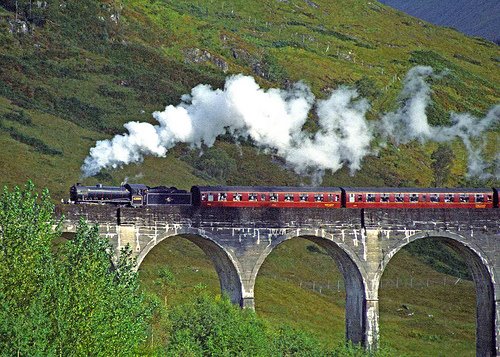
Jacobite Express
This section of the West Highland line, the Fort William to Mallaig extension, became a reality following an Act passed in the House of Commons in 1896. Lady Margaret Cameron of Locheil cut the first sod on the 21st January 1897 from which point the contractors, Robert McAlpine and Son, were allowed 5 years 6 months to construct the 40 miles of track. The task was completed by April 1901. Some 3,500 navvies worked on the line and whilst the viaducts are partially faced in stone they are in fact durably constructed in poured concrete giving the contractor the nickname which was to stick with him “Concrete Bob.” This was the first mass concrete viaduct in the country, and the use of concrete rather than stonework is one of the reasons that the West Highland Line has remained usable to this day.

From Fort William the train crosses the River Lochy with the ruined Inverlochy Castle on the east side of the river. After crossing the river the train travels along a flat expanse called the Corpach Moss with houses to the left and the Great Glen stretching into the distance to the right. The Great Glen is a spectacular valley running for over 60 miles between Loch Linnhe in the south west and Inverness and Moray Firth in the north east. The train slows down near the far end of the Moss to Cross the Caledonian Canal.

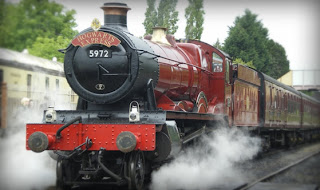
Hogwarts Express
To the left of the train there is Neptune's Staircase a row of locks that raise the canal to a height of 65 feet. The longest lock gate system in Britain and built during the Napoleonic Wars. Even (like most of the works built in response to the Napoleonic Wars) though it was never used for its wartime purpose the Caledonian Canal is a wonderful ship canal traversing the Great Glen of Scotland from Fort William to Inverness. One final point about Fort William – there is no fort! Built as part of a chain across the Great Glen which included Fort George and Fort Augustus it was knocked down to build the railway!
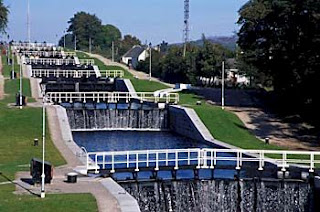

Neptune's Staircase on the Caledonian Canal
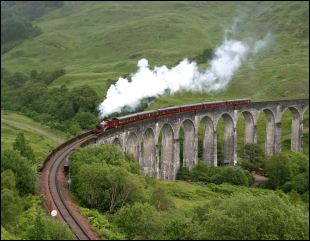
Glenfinnan Viaduct
The train does stop en route to Mallaig at the village of Glenfinnan where Bonnie Prince Charlie raised his standard. After crossing the world famous 21 arch Glenfinnan viaduct, which has been used in the Harry Potter movies, and offers wonderful views down the 17 mile long Loch Shiel, the train stops at the station giving you time to stretch your legs and visit the Museum in the station buildings. Situated at the head of Loch Shiel, Glenfinnan was the setting for the start of the ill fated Jacobite Rebellion led by Bonnie Prince Charlie in 1745. Glenfinnan is a very special place, and is almost hallowed ground for many Scots because of the historic associations with the Jacobite cause. It was here in 1745 that Bonnie Prince Charlie raised his standard in front of his gathered army to signify the beginning of the doomed second Jacobite rising that would become known as the "45". A 65ft monument commemorates the event, with further fascinating memorabilia and displays relating to Bonnie Prince Charlie to be found in the Visitor Centre. The statue on the top is not as many imagine that of the Prince, but one of his supporters. The monument was originally part of a hunting lodge which has since disappeared. Boat trips are available on the loch between Easter and October.
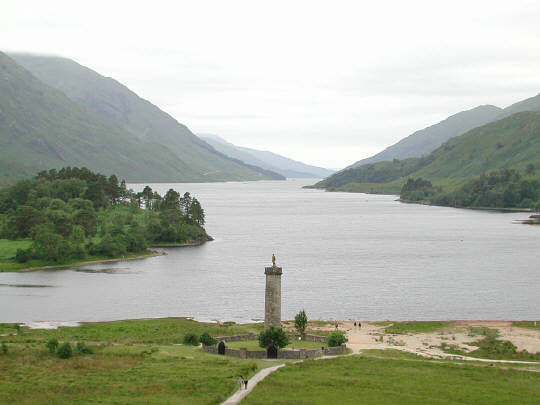
Glenfinnan Monument & Lough Shiel
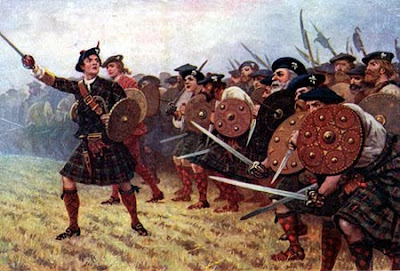
The "45" The Jacobite Rising
Next we continued to Lochailort which is well known for having firsts. Here, during the construction of the railway, as there were over 2,000 navvies living here, the first construction site hospital in Britain was established with 8 beds, 2 nurses and a doctor. Lochailort was also the first site of fish farms now seen all over Scotland. It was established in 1969, by the then Marine Harvest company. Lochailort is of interest because of Inverailort Castle, used for commando training in the second world war. Churchill’s declaration of unconventional war prompted the creation of the top-secret Special Operations Executive (SOE). Its agents would cause havoc behind enemy lines. In the autumn of 1940 the first recruits began to arrive at Inverailort, SOE’s initial Highland training HQ. Here, far from prying eyes, they absorbed essential paramilitary skills; how to survive in the wild, how to handle weapons and explosives, how to wage guerrilla war and how to kill silently. To teach them came a legendary duo from Shanghai, men used to policing the toughest and roughest city of its day - Major Bill Fairbairn and Captain Eric Sykes, who jointly invented the famous double-edged commando knife.

White sands of Morar
Beyond are the villages of Arisaig, Morar and Mallaig. On a clear summer's day from Arisaig you can see the "Small Isles" of Rum, Eigg, Muck, Canna and the southern tip of Skye. From there the train passes Morar and the silvery beaches used in the films "Highlander" and "Local Hero." Loch Morar is worth a visit as well, it is the deepest fresh water loch in Europe at 310 metres, and has its own monster called Morag!
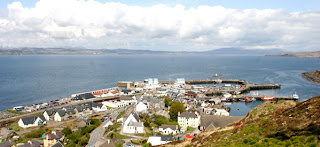
Mallaig with the Isle of Skye beyond

Main Street Mallaig
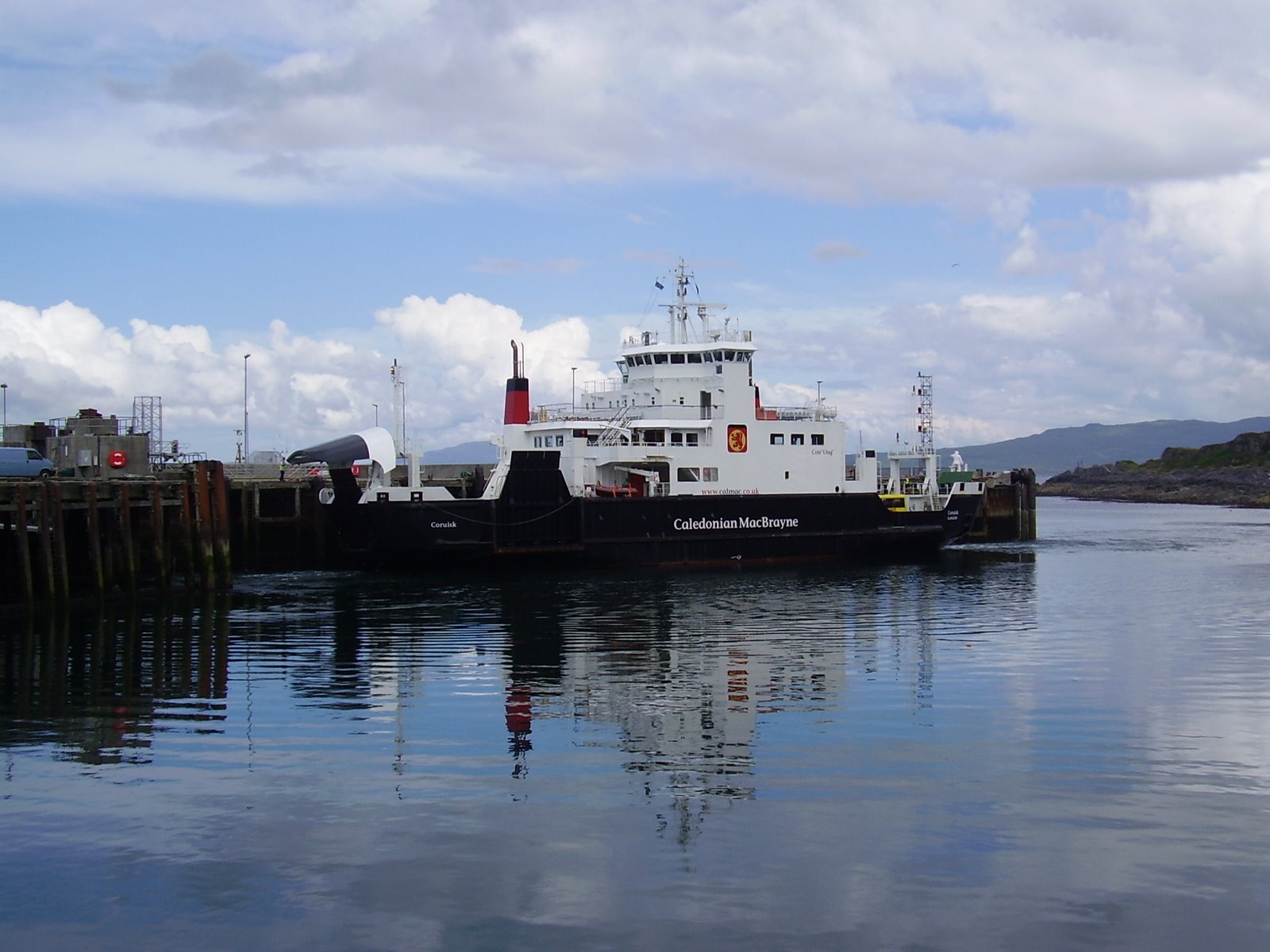
Ferry to Skye
The final destination is of course Mallaig. A bustling fishing port located at the end of the famous "Road to the Isles". From the ferry terminal you can travel to Skye and the Inner Hebridean Islands of Rum, Eigg, Muck and Canna. There is plenty to see and do while in the village and you have plenty of time before the return journey to Fort William. Whilst in Mallaig you can visit the Heritage Centre but whilst interesting I found the exhibits haphazard and somewhat amateurishly displayed. When the train first arrived at the village it consisted of a few cottages and the notoriety of being the point where Bonnie Prince Charlie returned to the mainland after his wanderings with Flora MacDonald in the Outer Hebrides. However, with the opening of the line in 1901, the harbour was built, another task taken on by the engineers of the line and before long, Mallaig became one of the most important fishing ports on the western coast of Britain - a position it still holds to this day. However beyond the fishing and the ferry to Skye this is a tourist village determined to rake in the tourist pound during the season. Two examples, despite the expectation of fresh seafood the village speciality appears to be battered haddock and chips with tea, bread and butter for £8.50, the price being standard wherever you go. There are no left luggage facilities at the station but you are directed to the Waterside shop where you can leave your bags for £2.00 each.

After having lunch and sightseeing we reprised our route back to Fort William and to Glasgow on ScotRail. This is a long trip (over 5 hours) on a turbo diesel service(with no First Class) but the ScotRail staff were friendly enough and it provided an opportunity to drink deeply from the cornucopia which is the dramatically beautiful scenery on the deservedly famous Iron Road to the Isles.
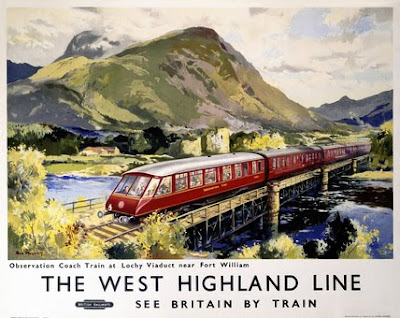
The Road to the Isles is described in the traditional Scottish ballad of the same name with the well-known chorus:
Sure, by Tummel and Loch Rannoch
And Lochaber I will go.
By heather tracks wi' heaven in their wiles;
If it's thinkin' in your inner heart
Braggart's in my step,
You've never smelt the tangle o' the Isles.
O, the far Coolins are puttin' love on me.
As step I wi' my cromak to the lsles.
Note; "Coolins" are the Cuillin mountains on Skye and a "cromak" is a shepherd's crook.
See also; Getting to Fort William on the Caledonian Sleeper
http://daithaic.blogspot.com/2008/07/caledonian-sleeper.html

Labels:
Bonnie Prince Charlie,
Fort William,
Glasgow,
Glenfinnan,
Glenfinnan viaduct,
Harry Potter,
Hogwarts Express,
Iron Road to the Isles,
Jacobite Express,
Mallaig,
Scotland,
ScotRail,
Skye
Subscribe to:
Posts (Atom)
